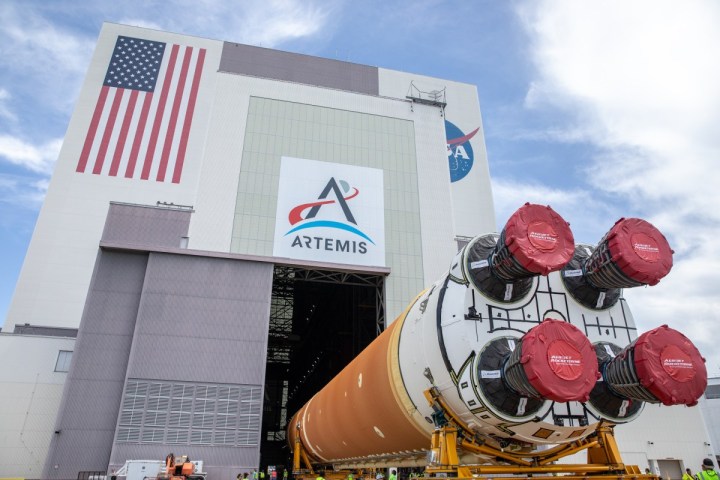
NASA’s epic Space Launch System rocket, standing 322 feet tall when fully stacked, has recently been on an similarly epic journey — traveling from New Orleans to Florida via barge. The rocket began its journey more than two weeks ago, and having covered more than 900 miles has now arrived safe at the Kennedy Space Center.
The core stage was manufactured and assembled at the Michoud Assembly Facility, and had to travel to Kennedy to be ready for integration and testing ahead of the Artemis II test flight. It will be used to carry crew members on a 10-day journey around the moon and back, including NASA astronauts Victor Glover, Christina Koch, and Reid Wiseman plus Canadian Space Agency astronaut Jeremy Hansen.
“With Artemis, we’ve set our sights on doing something big and incredibly complex that will inspire a new generation, advance our scientific endeavors, and move U.S. competitiveness forward,” said Catherine Koerner, associate administrator for NASA’s Exploration Systems Development Mission Directorate, when the core stage set off on its journey. “The SLS rocket is a key component of our efforts to develop a long-term presence at the Moon.”
Before the launch, however, there’s still a lot of work to be done to get the core stage ready for flight. It is now in the Vehicle Assembly Building at Kennedy, where it will be set into the mobile launcher — the platform that hooks it up to the ground systems — and integrated with the Orion spacecraft that will house the crew. In addition, the core stage need to have its twin solid rocket boosters and launch vehicle stage adapter added, and then the entire assembly will need thorough testing to ensure it’s ready to fly.
Artemis II is currently scheduled for September next year, following on from the Artemis I mission in November 2022 that saw an uncrewed version of the SLS and Orion capsule travel around the moon and back to Earth. That mission was a success; however, some components were damaged during the launch, and the launch of the first crewed mission was pushed back to accommodate more time for development and integration.
The long-term plan is to return humans to the surface of the moon for the first time in more than 50 years in the Artemis III mission, tentatively scheduled for September 2026.
Services Marketplace – Listings, Bookings & Reviews
